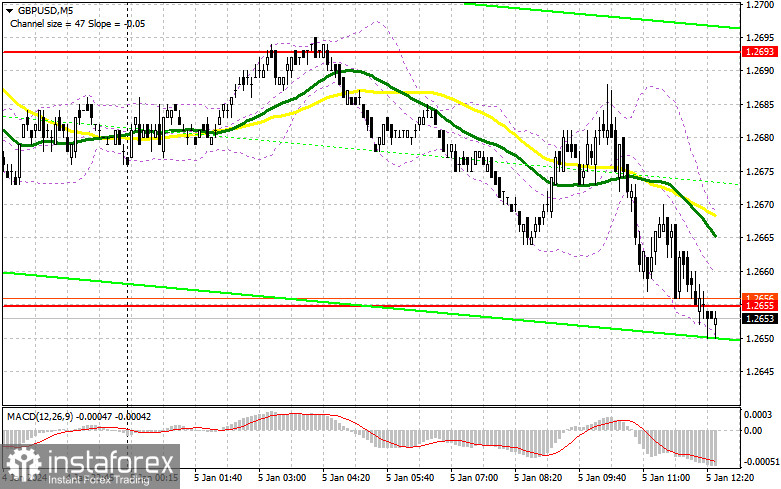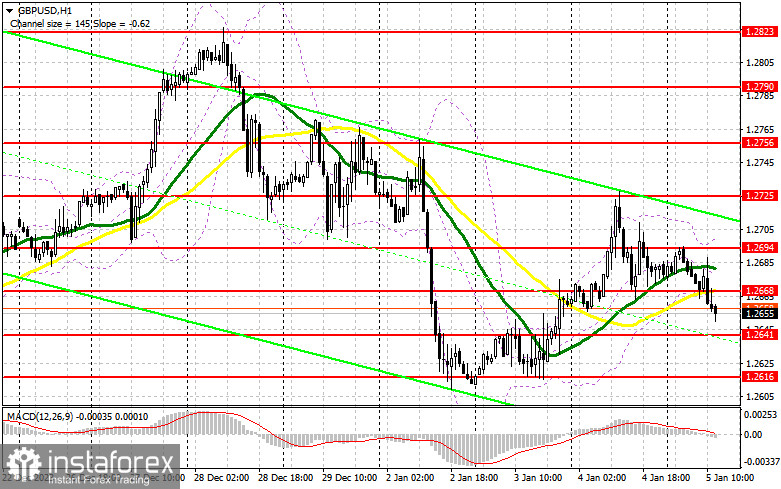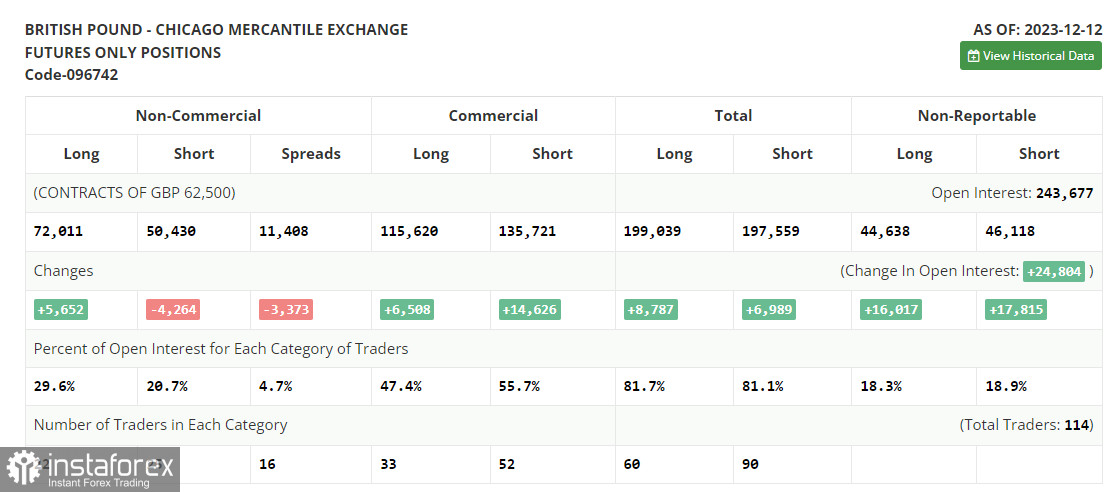In my morning forecast, I drew attention to the level of 1.2655 and planned to make trading decisions based on it. Let's look at the 5-minute chart and see what happened there. The decline towards 1.2655 did occur, but a false breakout did not materialize. The technical picture was slightly revised for the second half of the day.

To open long positions on GBP/USD, the following is required:
Considering the absence of significant data from the UK, the pound reacted negatively to data on the House Price Index and the PMI Index for the construction sector. However, much more important statistics lie ahead. The unemployment rate, changes in non-farm employment, and the ISM Services Business Activity Index in the US will determine the market's direction. And if the data show the strength of the US economy, pressure on the pound will only increase. In such a case, I prefer to act only after forming a false breakout around 1.2641. This will provide a suitable entry point for long positions, from where an upward movement can reach 1.2668 - an intermediate resistance formed during the first half of the day. A breakout and consolidation above this level will bring demand for the pound and open the path to 1.2694, where sellers will become more active. In the case of very weak labor market data, the ultimate target will be the area around 1.2725, where I plan to make a profit. Things will look bad for buyers in the scenario of GBP/USD declining and the absence of bullish activity at 1.2641 in the second half of the day. In such a case, I will postpone purchases until the next support level at 1.2616, the bull's last hope. I plan to buy GBP/USD immediately on a rebound only from 1.2584 with the goal of a 30-35 point correction within the day.
To open short positions on GBP/USD, the following is required:
Sellers continue to push the pound towards the weekly low, albeit hesitantly. But before selling again, I would like confirmation of large bears' presence in the market. Weak US statistics will be the test for sellers. Forming a false breakout around 1.2668 will provide a confident entry point into short positions with the prospect of a decline to the support area at 1.2641. A breakout and a bottom-up retest of this range are possible only in the case of very strong US labor market data, which will seriously blow the bullish positions, opening the path to 1.2616 - the weekly low. The ultimate target will be around 1.2584, where I plan to make a profit. In the scenario of GBP/USD rising and the absence of activity at 1.2668, buyers will strengthen their position at the end of the week. In such a case, I will postpone selling until a false breakout occurs at 1.2694. If there is no downward movement, I will also sell GBP/USD immediately on a rebound from 1.2725, but only with the expectation of a pair correction down by 30-35 points within the day.


Indicator signals:
Moving Averages:
Trading is slightly below the 30 and 50-day moving averages, indicating a sideways market.
Note: The author determines the period and prices of moving averages on the H1 hourly chart and differs from the general definition of classic daily moving averages on the D1 daily chart.
Bollinger Bands:
In case of a decline, the lower boundary of the indicator, around 1.2668, will act as support.
Indicator Descriptions:
- Moving Average (determines the current trend by smoothing volatility and noise). Period 50. Marked on the chart in yellow.
- Moving Average (determines the current trend by smoothing volatility and noise). Period 30. Marked on the chart in green.
- MACD Indicator (Moving Average Convergence/Divergence - convergence/divergence of moving averages). Fast EMA period 12. Slow EMA period 26. SMA period 9.
- Bollinger Bands. Period 20.
- Non-commercial traders - speculators, such as individual traders, hedge funds, and large institutions, use the futures market for speculative purposes and meet certain requirements.
- Long non-commercial positions represent the total long open positions of non-commercial traders.
- Short non-commercial positions represent the total short open positions of non-commercial traders.
- The total non-commercial net position is the difference between short and long non-commercial positions.
 English
English 
 Русский
Русский Bahasa Indonesia
Bahasa Indonesia Bahasa Malay
Bahasa Malay ไทย
ไทย Español
Español Deutsch
Deutsch Български
Български Français
Français Tiếng Việt
Tiếng Việt 中文
中文 বাংলা
বাংলা हिन्दी
हिन्दी Čeština
Čeština Українська
Українська Română
Română

